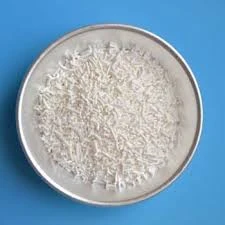
Understanding the Benefits and Uses of Ammonium Phosphate Fertilizer in Agriculture
Ammonium Phosphate Fertilizer A Key to Improving Soil Fertility
Ammonium phosphate is a widely used type of fertilizer that plays a crucial role in enhancing soil fertility and boosting crop yields. This compound is primarily composed of ammonium (NH4) and phosphate (PO4), two essential nutrients that plants need for optimal growth. The two main forms of ammonium phosphate fertilizer are monoammonium phosphate (MAP) and diammonium phosphate (DAP), each with distinct characteristics and applications.
One of the most significant advantages of ammonium phosphate fertilizer is its high nutrient content. MAP typically contains about 11% nitrogen and 48% phosphorus, while DAP contains approximately 18% nitrogen and 46% phosphorus. This high concentration of essential nutrients allows farmers to apply less fertilizer while still meeting the nutrient requirements of their crops, making it a cost-effective choice for agricultural practices.
The application of ammonium phosphate fertilizer increases the availability of phosphorus in the soil, promoting healthy root development and overall plant growth. Phosphorus is vital for numerous physiological processes in plants, including energy transfer, photosynthesis, and the synthesis of nucleic acids. Without sufficient phosphorus, plants may exhibit stunted growth, poor flowering, and reduced fruiting, ultimately leading to decreased yields.
ammonium phosphate fertilizer

Ammonium phosphate also benefits soil health by improving its structure and enhancing microbial activity. The presence of ammonium helps to lower the pH of alkaline soils, making nutrients more accessible to plants. Additionally, the phosphate component stimulates beneficial soil microorganisms that further contribute to nutrient cycling and soil fertility.
Farmers can apply ammonium phosphate fertilizer in several ways, including broadcasting, banding, and foliar feeding. Broadcasting involves spreading the fertilizer evenly over the soil surface, while banding places it directly in the root zone of the plant, minimizing nutrient loss and increasing uptake efficiency. The method of application often depends on the crop type, soil conditions, and specific nutrient needs.
Despite its benefits, it is essential to use ammonium phosphate fertilizer judiciously. Overapplication can lead to nutrient runoff, which may pollute water bodies and contribute to environmental issues such as algae blooms. Therefore, it is crucial for farmers to conduct soil tests to determine the exact nutrient requirements and apply fertilizers accordingly.
In conclusion, ammonium phosphate fertilizer is an invaluable tool for farmers aiming to enhance soil fertility and increase crop productivity. By providing essential nutrients in a concentrated form, it supports healthy plant growth while promoting sustainable agricultural practices. With careful management and consideration of environmental factors, ammonium phosphate can contribute significantly to the success of modern farming and food production systems.
-
Understanding Synthetic Rubber OptionsNewsApr.27,2025
-
Trichloroisocyanuric Acid: Essential for Clean and Safe WaterNewsApr.27,2025
-
Sodium Dichloroisocyanurate: Key to Safe Water TreatmentNewsApr.27,2025
-
Sodium Acid Pyrophosphate: Essential in Modern Food ProcessingNewsApr.27,2025
-
Essential Water Treatment ChemicalsNewsApr.27,2025
-
Denatured Alcohol and Its Industrial UsesNewsApr.27,2025
-
The Versatile Uses of Sodium BicarbonateNewsApr.24,2025
Hebei Tenger Chemical Technology Co., Ltd. focuses on the chemical industry and is committed to the export service of chemical raw materials.
-

view more DiethanolisopropanolamineIn the ever-growing field of chemical solutions, diethanolisopropanolamine (DEIPA) stands out as a versatile and important compound. Due to its unique chemical structure and properties, DEIPA is of interest to various industries including construction, personal care, and agriculture. -

view more TriisopropanolamineTriisopropanolamine (TIPA) alkanol amine substance, is a kind of alcohol amine compound with amino and alcohol hydroxyl, and because of its molecules contains both amino and hydroxyl. -

view more Tetramethyl Thiuram DisulfideTetramethyl thiuram disulfide, also known as TMTD, is a white to light-yellow powder with a distinct sulfur-like odor. It is soluble in organic solvents such as benzene, acetone, and ethyl acetate, making it highly versatile for use in different formulations. TMTD is known for its excellent vulcanization acceleration properties, which makes it a key ingredient in the production of rubber products. Additionally, it acts as an effective fungicide and bactericide, making it valuable in agricultural applications. Its high purity and stability ensure consistent performance, making it a preferred choice for manufacturers across various industries.











